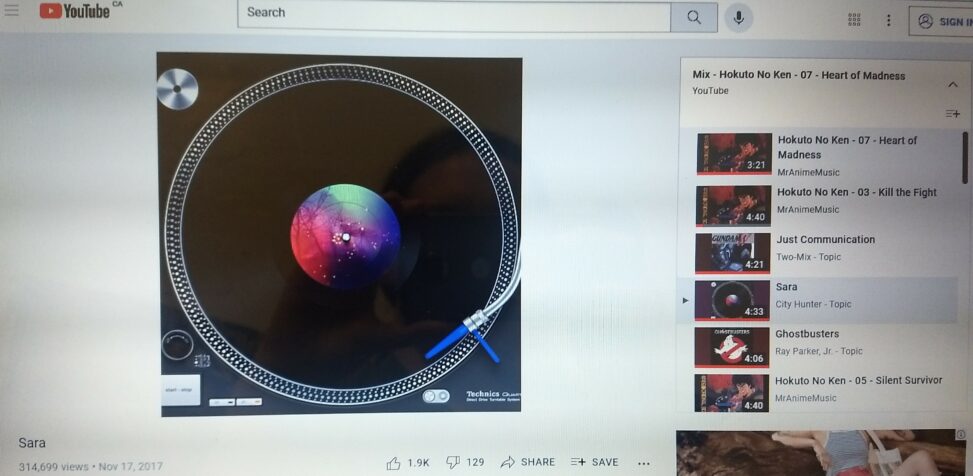Image Attribution: “VISA 1500 Assignment 3 SNS” by Olivia Roberts is licensed under CC BY-NC-SA. (See interactive map)
Olivia Roberts
October 26th, 2021
VISA 1500 Fall 2021
Terryl Atkins
Assignment #3 Part A
When it comes to Social Networking Sites, (SNS), the ones I tend to use the most is Facebook and YouTube. I use Facebook/Messaging as a tool for communication, while YouTube is a source for entertainment.
While monitoring myself on these sites, I noticed that I’m mostly on YouTube when compared to Facebook. I can be on YouTube all day, while Facebook is something I “check” every now and then throughout the day(s).
YouTube is more of a Social Media Entertainment (SME) platform than an SNS one, (YouTube did have a messaging feature at one point, but was later rid of on the platform). As such, it’s a sufficient source for watching videos and listening to music. What the YouTube algorithm will do is customize my home page feed based on my search results, video viewership, and the videos’ content. The home feed and videos are based on my interests and less about what’s trending or popular. As I’m browsing, I’ll get a list of recommended videos that are similar to the ones I’ve previously consumed. That being said, this means that my exposure to a wider range of content on YouTube is limited, or I’ll receive recommended videos that I have no interest in based on the same algorithm.
The same can also be said for music consumption on YouTube. Rather than searching individual songs, YouTube tailors a playlist for me based on the music I listen to. This means I can let the music play without constantly searching for a song.
One con that is more of peeve is the amount of advertising on YouTube. Most of the time, there will be two ads that play before the start of the video. Almost all the time, the ads are unskippable, (with some exceptions). This forces me to watch a sponsored ad that I don’t care for. The same can be said for music, as an ad will interrupt the flow of the playlist mid video. There is a version of YouTube called “YouTube Premium”, which promises “ad-free” videos for a monthly/yearly subscription fee. It’s as if YouTube marketers are using the annoying nature of ads in order to get people to pay for using the platform.
As for Facebook, (or more specifically Facebook Messenger), I spend less time on it. The most I post on Facebook is my artwork, and even then those who are my “friends” have access to view them as my account is private. Due to the privacy setting, I can only view posts from my friends and pages that I follow, limiting my exposure to wider or public news on the platform.
However, Facebook will have sponsored ads in my news feed, (such as DoorDash), rather than ads tailored for me. As for messaging, it’s only for when I wish to communicate with someone for a bit, or if there’s an important message that needs to be sent. That being said, Facebook Messaging relies on WiFi in order for the communication to send/receive messages. Using data can give me access to Facebook Messenger, but said data will add to my phone bill, which I prefer to avoid.
While my use of YouTube has remained unchanged, my reliance on Facebook Messenger has increased. Both platforms had user increases during the pandemic, (either to gather information or to check on loved ones).
Due to the customization, setting preferences and data collecting on both platforms, I don’t believe that everyone consumes the same type of content I do. With the exception of sponsored or “general” advertisements, my personal preferences on each platform dictates what is being offered/shown to me.
Sources:
. Burke, Moira and Kraut, Robert. E. “The Relationship Between Facebook Use and Well-Being Depends on Communication Type and Tie Strength”. Journal of Computer-Mediated Communication. Vol. 1, no.4 (July 1, 2016): 265-281. https://doi.org/10.1111/jcc4.12162.
. Cunningham, Stuart and Craig, David. “Being ‘really real’ on YouTube: Authenticity, Community and Brand Culture in Social Media Entertainment”. Media International Australia. 164, no.1 (May 17, 2017): 71-81. https://doi.org/10.1177/1329878X17709098.
. Porter, Jon. “YouTube discontinues private messages to focus on keeping things public”. The Verge. (August 22, 2019). https://www.theverge.com/2019/8/22/20828177/youtube-private-messages-discontinued-dm-public-conversations.
. Budzinski, Oliver, and Dreusicke, Nadine-Lindstädt, and Gaenssle, Sophia. “The battle of YouTube, TV and Netflix: an empirical analysis of competition in audiovisual media markets”. SN Buisness & Economic 1, no.116 (August 23, 2021). https://doi.org/10.1007/s43546-021-00122-0.
